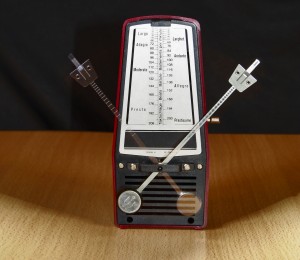“Your cadence is your music.” – William Shatner
We’ve all heard those voices around us that seem to resonate with us right away. Whether it’s a voice-over on radio or television, a motivational speaker, or someone in your daily life, there are people who speak to us in clear, influential ways that we are able to understand and connect with immediately. They are often very present with their words and have a rhythm to their voice that you’re drawn to. This rhythm is vocal cadence and connecting to your vocal cadence in voice-over is a powerful tool that you can leverage.
Mastering the art of vocal cadences while reading various types of voice-over scripts will allow you to lift the words off of the page, keep the listener’s attention throughout, and become more present and compelling with your reads. It will also allow you to be able to switch from different types of voice-over copy easily. Grasping the concept of vocal cadences helps you sound less like you’re reading and more conversational – as if there isn’t a script in front of you.
Let’s first look at what cadence is. Cadence is the way that your words flow. It is the rhythm in which you speak, the words you choose to emphasize, and the up and down movement of your pitch throughout your sentences. In voice-over, your vocal cadence will vary depending on the type of script you are reading. For example, if you’re reading a commercial spot where the client is looking for a bright and friendly read, your cadence will be faster and your change of pitch will vary more. If you are doing a narration spot for a documentary, your cadence will be slower and won’t vary as much because you’re giving the audience time to take in what you’re saying and letting every word land with them. If you’re voicing an explanatory video, you would make sure to emphasize important words to ensure your audience understands the key points. Each of these examples would involve a different cadence to get across the point or emotion you’re looking to portray.
Connecting with your natural cadences. Different people do not have the same natural cadence, even if they are reading the same type of script. We all have our own personality and inflection that we put on words when we speak. Understanding how we speak naturally in different contexts is the building block to creating authentic cadences. Start to study yourself in different conversations with your friends, coworkers, spouse, or children. How does your cadence vary from when you’re telling someone a story about something that happened to you, versus explaining something complicated and trying to get someone to understand you? When you’re telling a personal story, you have an emotional connection or excitement to your words. You may speak faster at the parts that build your story and slow down at the most dramatic parts in order to emphasize that those are important. If you’re explaining something to someone, you would speak slower and choose which words to emphasize that would most help them understand. The more you start to focus on how you speak in various situations, the more you can bring that into your scripts of different kinds.
Determine your cadences when you’re analyzing your voice-over copy. Now that you’ve started to study your natural cadences, use them when you’re first analyzing your voice-over copy. Determine who the script is speaking to and what message you’re trying to get across. Go back to how you speak naturally in your daily life and think of a similar message you’ve tried to get across. If you have a commercial spot marketing a product to females, for example, think of a time you’ve been excited to tell a group of female friends about something you’ve discovered. You can imagine that they’re in front of you and you’re saying the script to them. This will help you connect to what you’re saying and create presence with your words. We forget these natural cadences when we’re reading scripts off of a page because we’re not present with our rhythms or connecting to the message we’re working to get across. You should connect with what you are saying just as you would if it was your own story.
Listen for repetitive cadences. If you’re reading all your sentences with the same cadences, you are not connecting with your scripts. Repetitive cadences will come across sing-songy, which is the repetitive rising and falling of the same inflection of the voice. If all of your sentences sound the same in cadence, you will lose the attention of your listening audience quickly. Each sentence should sound different in cadence than the sentence before. This will keep your listener’s attention throughout your read. Each sentence will come across as a new idea instead of something they’ve already heard because of repeating cadences.
Vary your speed throughout your sentences. Many people tend to keep an unnecessary pace in their voice-over reads like they are speaking with a metronome. However, when you listen to how people speak naturally, nobody talks like that. You naturally vary your speed as you speak, giving more attention and time to the words you want to emphasize. If you’re too paced in your reads it comes across monotonous and does not keep your listener’s attention. As an exercise, go through your voice-over scripts and underline the words that are important to emphasize. Then, speed up a little more on the rest of the words and make sure you slow down and emphasize the words that are underlined. It’s a great way to really hear how you’re able to make the words that you are looking to emphasize more powerful and how changes in speed come across more authentic.
Concentrating on the cadences in your reads is a way to push yourself into really connecting with your copy, really lift the words off the page, and utilize your natural way of speaking and personality to bring to life compelling voice-overs. Livening up your cadences allows you to connect with your listening audience and hold their attention from the start of your read until the very end. It’s a tool you can practice and refine, get creative with, and learn to utilize to bring forth captivating reads that are authentic to you.




